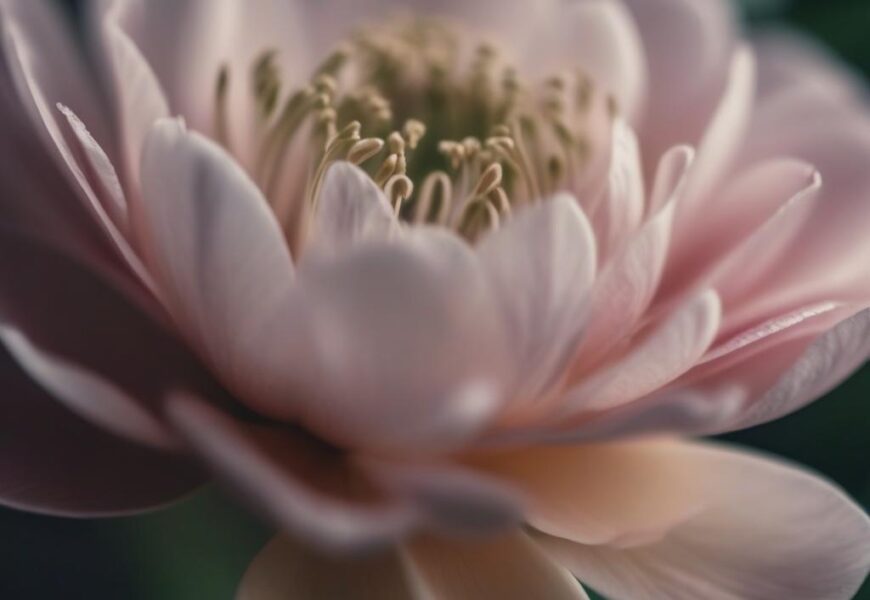-
Table of Contents
- The Carpel of a Flower: Structure, Function, and Importance
- What is a Carpel?
- Anatomy of a Carpel
- Function of the Carpel
- Importance of the Carpel
- Q&A
- 1. Can a flower have multiple carpels?
- 2. Are all carpels in a flower identical?
- 3. How does self-pollination occur in flowers with a single carpel?
- 4. What is the role of the carpel in seed dispersal?
- 5. Can a flower function without a carpel?
- Summary
Flowers are not only beautiful to look at, but they also play a crucial role in the reproduction of plants. At the center of every flower lies the carpel, a vital reproductive structure. In this article, we will explore the anatomy, function, and significance of the carpel in the life cycle of a flower.
What is a Carpel?
A carpel, also known as a pistil, is the female reproductive organ of a flower. It is typically located at the center of the flower and consists of three main parts: the stigma, style, and ovary. The carpel is responsible for the production of female gametes (eggs) and the reception of male gametes (pollen) for fertilization.
Anatomy of a Carpel
The carpel is a complex structure with distinct components:
- Stigma: The stigma is the uppermost part of the carpel and is often sticky or feathery to facilitate pollen adhesion. It serves as the landing platform for pollen grains.
- Style: The style is a slender tube-like structure that connects the stigma to the ovary. It provides a pathway for the pollen tube to grow and deliver the male gametes to the ovary.
- Ovary: The ovary is the enlarged basal part of the carpel. It contains one or more ovules, which are the structures that develop into seeds after fertilization. The ovary also produces hormones that regulate the growth and development of the flower.
Function of the Carpel
The carpel plays a crucial role in the reproduction of flowering plants. Its main functions include:
- Pollen Reception: The stigma of the carpel is designed to receive pollen grains. The sticky or feathery surface of the stigma allows the pollen to adhere to it, ensuring successful pollination.
- Pollen Tube Formation: Once the pollen grain lands on the stigma, it germinates and forms a pollen tube. The style provides a pathway for the pollen tube to grow towards the ovary.
- Fertilization: The pollen tube delivers the male gametes (sperm cells) to the ovary. Fertilization occurs when the sperm cells fuse with the egg cells within the ovule, resulting in the formation of a zygote.
- Seed Development: After fertilization, the ovule develops into a seed within the ovary. The ovary protects the developing seeds and provides them with nutrients until they are mature enough to be dispersed.
Importance of the Carpel
The carpel is essential for the survival and propagation of flowering plants. Here are some key reasons why the carpel is important:
- Reproduction: The carpel is responsible for the sexual reproduction of flowering plants. It ensures the transfer of genetic material from one generation to the next, leading to the production of viable seeds.
- Biodiversity: The carpel allows for the creation of diverse plant species through cross-pollination. By attracting pollen from different plants, the carpel promotes genetic variation and enhances the adaptability of plant populations.
- Food Production: Many of the fruits and vegetables we consume are the result of successful carpel development. The ovary of the carpel develops into a fruit, which contains seeds that can be dispersed to grow new plants.
- Ecosystem Support: Flowers, and consequently carpels, play a vital role in supporting ecosystems. They provide nectar and pollen as food sources for insects, birds, and other animals. This, in turn, contributes to the pollination of other plants and the overall health of ecosystems.
Q&A
1. Can a flower have multiple carpels?
Yes, a flower can have multiple carpels. Flowers with multiple carpels are called compound or syncarpous flowers. Each carpel in a compound flower may have its own stigma, style, and ovary, or they may be fused together.
2. Are all carpels in a flower identical?
No, not all carpels in a flower are identical. In some flowers, the carpels may be fused together, forming a single structure with multiple ovules. In other flowers, each carpel may be separate and distinct, with its own stigma, style, and ovary.
3. How does self-pollination occur in flowers with a single carpel?
Self-pollination can occur in flowers with a single carpel through a process called autogamy. In autogamy, the pollen from the same flower is transferred to the stigma of the carpel, leading to self-fertilization. This can happen through various mechanisms, such as the bending of the flower’s reproductive parts or the release of pollen onto the stigma.
4. What is the role of the carpel in seed dispersal?
The carpel plays a crucial role in seed dispersal. After fertilization, the ovary of the carpel develops into a fruit, which protects the developing seeds. The fruit can have various adaptations for dispersal, such as being eaten by animals or having structures that aid in wind dispersal. Once the fruit is dispersed, the seeds can germinate and grow into new plants.
5. Can a flower function without a carpel?
No, a flower cannot function without a carpel. The carpel is an essential reproductive structure that is responsible for the production of seeds. Without a carpel, a flower would not be able to undergo fertilization and produce viable offspring.
Summary
The carpel is a vital component of a flower, serving as the female reproductive organ. It consists of the stigma, style, and ovary, and plays a crucial role in the reproduction of flowering plants. The carpel is responsible for pollen reception, pollen tube formation, fertilization, and seed development. It is essential for the survival and propagation of plants, promoting genetic diversity, supporting ecosystems, and providing food sources. Understanding the structure and function of the carpel enhances our appreciation for the intricate processes that occur within flowers and their significance in the natural world.




